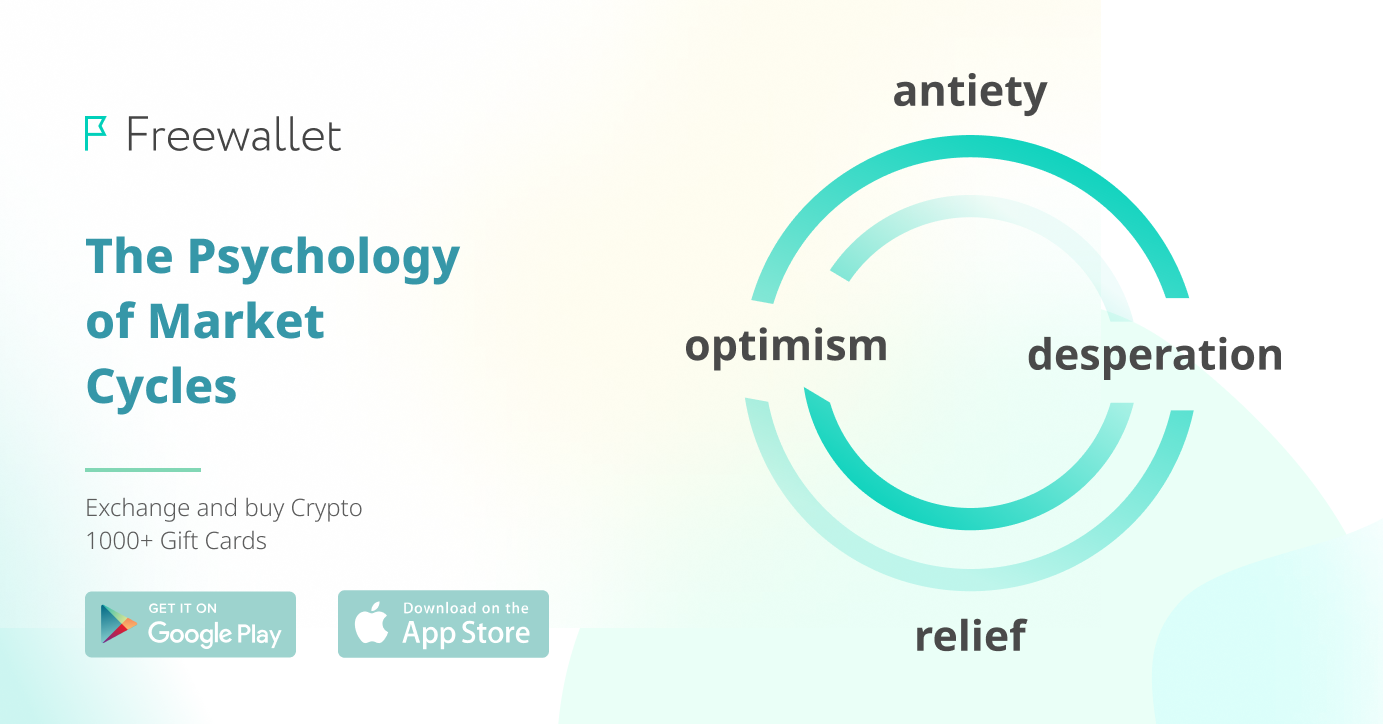
Today, we’re going to tackle crypto slang. It may seem intimidating at first, but once you get acquainted with it, you’ll want to use it as often as possible: it sounds really cool. JUST HODL AND BTD, SCREW ALL NOCOINERS – you know, that kind of thing.
Some of these words and abbreviations are used in finance & investment in general, but most are exclusive to the crypto industry.
Let’s go!
GENERAL FINANCIAL LINGO
Whale
А whale is a big playa (with a “ya” at the end). It’s an individual so wealthy that he can unilaterally alter the direction of the market.
When a whale puts a huge “buy” order, the price skyrockets, and people (foolishly enough) flock to buy it, thinking it’s going even higher. And vice versa: when whales sell, everybody sells, believing there’s no bottom to the stock’s collapse.
Many investors (and especially traders) are trying to copy the actions of whales to copy their profits as a result. But this ultimately leads to nothing, since he who maketh the second move always loseth. Whales are always ahead of us due to their connections on Wall St.
Moreover, you don’t really want to be a whale. When you operate with that kind of funds, you’re always being monitored by the authorities, and any wrong step you take can result in a huge fine or even a jail sentence.
Pump and dump
This phrase describes a classic scam scheme which has seen a genuine Renaissance during the crypto era.
In a “pump & dump” scheme, the scammer tells everyone online about how a particular coin is “going to the moon” (see above) and can alone fund your entire retirement. What he doesn’t announce is that he owns a huge chunk of the said currency.
When people buy into the story, artificial demand is being created, and the price of the coin actually rises (that’s the “pump” part). And now comes the “dump”: the scammer sells all his coins, capitalizing on the inflated price; The price subsequently plummets, and peoples’ financial state is left in shambles.
Market cap
We actually have a whole article coming up on this topic! We publish links to all our articles on Twitter, so you can follow us and always stay tuned.
In short, market cap(italization) is the circulation supply (the number of coins currently out there) multiplied by the coin’s price. For example, there is currently 345,5 mil SOL out there; the price of Solana is around $38, so the market capitalization of Solana’s token is just over 13 bil.
Market capitalization is a useful metric for evaluating how important the coin really is. We all know how wildly the price of a cryptocurrency fluctuate, but if we take a look at its market cap, we can assess how much it has truly grown.
The smaller the market cap – the higher the volatility. The higher of the volatility – the more probable a big surge and a huge plunge. Take this into account when buying crypto, and you’ll make better decisions than most people.
These two words can be heard in almost any financial report on the news. ”Bullish” is a synonym of an uptrend, while “bearish” refers to a downtrend. This juxtaposition comes from the description of the two types of investors.
Bullish/bearish
Bulls go long on positions and bet on the market going up; metaphorically speaking, they raise the prices with their horns. Bears, on the other hand, go short and hope the prices will drop (The concept of shorting is a bit complex; if you don’t know what it means, you should check out this video), so they beat the prices down with their paws.
Who knew Wall Street had room for poetry, right?
Buy the dip (BTD)
“Buy the dip” is the easiest and one of the most effective investing strategies. At the same time, it is pretty hard to grasp for an outsider.
Logically speaking, if a cryptocurrency rises in price, you should buy it to capitalize on the gain; if it starts dropping, it’s time to sell it to cut your losses short. As we know, in reality you should act the exact opposite. BTD refers to the correct action in a bear market – buying more assets at a lower price.
Although it sounds great and it’s definitely more advanced than investing without accounting for the price, there are certain downsides to the BTD strategy. It’s almost impossible to time the market perfectly, so you may wait years for a perfect dip, while other investors buy over this entire period and end up with more assets and higher profits.
CRYPTO EXCLUSIVES
HODL – Hold on for Dear Life
This is not as much of an acronym as a subculture. HODLers are those who bought crypto (mainly Bitcoin) very long ago and have been holding on to it ever since, resisting the urge, for example, to sell it during the new all-time-highs of April and November 2021.
They believe in the technology behind crypto so much that they are willing to sacrifice short-term profits in order to use their coins decades from now when they’re the only currency in the world (allegedly).
HODLers have online support communities where they tell each other to man up and keep holding, with rising and plummeting prices alike.
Some of the HODLers even retire to the woods: that’s how extreme their lifestyle can get.
Going to the moon
You’re bound to have seen this online at some point. People all over the Internet keep telling you that some particular coin is #goingtothemoon (meaning it’ll increase tenfold, a hundred times or even more). It’s really obnoxious, but it frequently ignites one’s FOMO.
Stock predictions should be trusted very cautiously, crypto predictions are almost always misleading, and this type of content is just rubbish and usually is part of a scamming scheme (see below).
ICO – Initial coin Offering
This is the crypto counterpart of IPO (Initial Public Offering). During an IPO, the stock of a company is first released to the market. An ICO is the same, but instead of stock we have newly minted coins.
Both IPOs and ICOs create endearing opportunities for investors and traders, since stock shares and coins tend to rise in value significantly after the initial release. However, these opportunities come with a risk, and this risk is amplified tenfold with ICOs.
In 2017, ICOs were very trendy. Many people decided to jump on this bandwagon, entrepreneurs and investors alike. Many ICOs were authentic and eventually lucrative (among others, Polkadot and Tezos were born during the 2017 craze), but man it turned out to be out right scams, and this severely damaged the reputation of crypto in the long run.
KYC – Know Your Customer
KYC is a standard procedure that all new users of centralized exchanges (like Binance) have to undergo. These platforms need to make sure that a) you’re a real person and b) you’re a trustworthy person, so they request a proof of ID and a selfie.
There is no need to worry when a platform requests you to pass a KYC. It is done for the safety of you and your funds, so you can trade freely knowing that everyone else on the platform has passed such a procedure too.
However, if you value your privacy above safety, then decentralized exchanges (like Uniswap) are exactly what you need.
NFTs – Non-fungible tokens
NFTs represent such a huge chunk of the cryptocurrency market that they deserve an entire article on their own (currently we have only one on the topic, but it’s pretty curious).
Non-fungible basically means “unique”. Up until recently, no piece of content on the Internet could be unique: the digital environment is replicable by nature. It poses certain difficulties for maintaining privacy rights. And these problems are solved by NFTs.
When we think of NFTs, we usually imagine an ugly image of a gorilla sold for millions of dollars. But non-fungible tokens are much bigger than that: there are potential use cases include upgrading the royalty system or revolutionizing supply chains.
One cannot fully explain this concept in a hundred words we have for this section, so if you’re interested, we advise that you check out a material dedicated solely to the topic.
No-coiner
A new coin or is somebody who hasn’t put any money into cryptocurrency. The reason for that is usually believing that crypto is a bubble which is about to burst.
If you want to get inside the nocoiners’ (this spelling is also appropriate) mind, you can read an article by Vice.
Queerly enough, there is no word like “all-coiner” describing somebody who has their entire portfolio in crypto, even though it is much worse than having none at all.
FUD – Fear, Uncertainty and Doubt
Spreading FUD is distributing false information about a certain cryptocurrency in order to ignite panic in the heart of investors and cause the price to drop. It is essentially an exact opposite of shilling, but there is also a key similarity: In both cases, only the initiator of the shill / FUD can turn a profit.
Bagholder
А bagholder is somebody who has taken the HODL approach too far and holds on to his or hers coins until they drop to zero. So if you HODL BTC, ETH or other biggies, you’re alright, but holding on to PoopCoin at $0.00001 waiting for that sweet 100X to come earns you the shameful title of a bagholder.
Sats = Satoshis
Satoshi is the smallest possible fraction of Bitcoin – one hunder millionth, or 0.00000001 BTC. The term itself derives from the name of the mysterious Bitcoin developer, Satoshi Nakamoto (his identity is still unknown today). We go in-depth into fractions of BTC, they are benefits and risks in a separate article on the topic.
Cryptosis
Cryptosis is a kind of a modern disease that originates from the dangerous mix of cryptocurrency in social media. Those who have cryptosis are frantically consuming crypto-related content and usually purchasing vast amounts of cryptocurrency. While the former is pretty harmless (and can even be educational), the latter should be avoided. When agitated, buying anything is not a good idea, especially not something as volatile as crypto.
Diamond hands / paper hands
People with diamond hands hold onto their crypto for extended periods of time, not suffering from short-term fluctuations and benefiting from long-term growth. This requires a lot of courage, firmness, hence the metaphor of a diamond.
Paper hands, on the contrary, sell off too quickly, thus losing money because of volatility and missing out on the future potential. Shame…
Shill
When somebody overtly endorses a coin online, he or she engages in shilling. It is an inherent part of any cryptocurrency scam. The person may disguise himself as a fellow investor or enthusiast, but most often it’s the developer who is trying to pump up the price and then run with the profit. You’ll be better off if you avoid any excited crypto-related posts on social media.
OTHER
FOMO – Fear Of Missing Out
This term is not exclusive neither to crypto nor to finance in general. It comes from psychology and describes the social anxiety when we feel like people have fun and we’re missing out on it.
FOMO has gotten exacerbated in the social media era, when the world is constantly bombarding you with beach / party photos. It can also arise from investment-related content. If you see someone bragging on Reddit about a 10X on a certain coin, you may feel like you’re missing out and rush to Binance to purchase it.
When people give in to FOMO, they overlook doing proper research, buy stocks / bonds / crypto they wouldn’t normally buy and at the end are left disappointed with a down portfolio. Remember: if everyone is doing something, it’s probably not the best investment decision for you.
There’s a good video out there on how to deal with this nasty feeling and thus keep your funds safe. It’s useful, although a bit skeptical towards cryptocurrencies.
Vaporware
A vaporware is a product which everybody knows about during the development stage, but it ends up not being developed. That’s the worst case scenario: alternatively, the product can be announced months before its release, and then all the details of it are kept in secret.
Vaporwares often popped up during the 1980s bull market. They were also pretty prominent in the dotcom bubble of the late 90s.
The term has been criticized for being used too broadly, turning into a stain on the reputation of the developers.
Rekt
A distorted form of the word “wrecked”. Borrowed from gamers, it describes a dire situation in which a person or a coin is ruined financially. People usually get “rekt” after making big mistakes: for example, playing with margin trading or investing in a crypto without doing any research. Don’t do that.
WAGMI/NGMI – We’re All Gonna Make It / Nobody’s Gonna Make it
This meme originates from a 2011 motivational video by a bodybuilder and online influencer Zyzz (his story is actually fascinating, you should check it out). After circulating around 4chan and Reddit For 9 years, it was widely adopted by the crypto community.
People use WAGMI to cheer each other up when a stock or a crypto is going up. NGMI Is used to describe those who are a) buying cryptocurrencies because of the hype and waiting for them to blow up; b) selling off during market dips, turning losses on paper into real ones. That kind of behavior should indeed be discouraged.
The Bottom Line
After reading this article, you are infinitely more equipped with crypto knowledge than an average person. But remember: knowing all the abbreviations doesn’t make you a pro.
If you want to further your education crypto, young Skywalker, follow us on social media and read our blog! May the 30X be with you.
What crypto slang term we may have left out? Let us know in the comments below!
Related
Stay tuned
Subscribe for weekly updates from our blog. Promise you will not get emails any more often.
Most Popular
New Posts
Stay tuned
Subscribe for weekly updates from our blog. Promise you will not get emails any more often.







